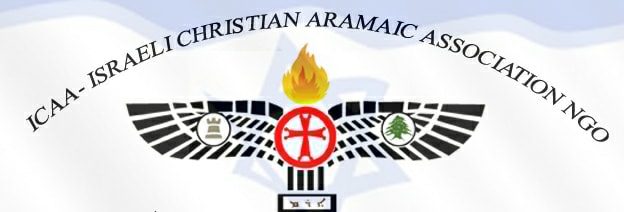The Aramaic language is a group of Northwest Semitic dialects which were originally spoken by Aramaic tribes who lived in the Levant .
It was also used as a lingua franca in the region that extends from present-day Egypt to present-day Pakistan between 600 BCE and 600 AD (Murad 1974, Abdu 1997, Bae 2004). One of the Aramaic dialects is Syriac, the Christian version of Western Aramaic.
Like Arabic and Hebrew, Syriac is a Semitic language that has a consonantal writing system in which consonants are represented but vowels are frequently omitted. Like its Arabic counterpart, Syriac writing is cursive and is written from right to left; however, unlike the Arabic letters, which can have up to three different shapes depending on their positions (initial, medium, final), the Syriac letters, like the Hebrew letters, can have at most two different shapes depending on whether the letter is in final position or not. Like Hebrew, Syriac has 22 consonants; in addition, there are five vowel diacritics which are placed above the consonants and which are divided into two groups, short and long, as can be seen in Table 1 below:

Syriac literature, which was highly affected by Greek influence, burgeoned between the third and eighth centuries AD. In fact, it was through Syriac that Greek learning and thought were passed on to the Islamic world; it was Syriac scholars who translated the late Hellenistic science texts from Syriac into Arabic.
Nevertheless, following the Arab invasion of the Levant in the 7th century AD, Syriac began to decline (Barbi 2000, Wright 2001, Clocksin and Fernando 2003, Sandy 2008). Today Syriac is still spoken in some villages in Syria and Turkey and among some members of the Aramean Syriac Orthodox community in Jerusalem, the Aramean Maronites of Cyprus ( Kur maketis area),Sweden Aramean Syriac community and in other parts of the world. Despite its decline, Aramaic Syriac has been maintained as the sacred language of some Christian communities, such as Aramean Syriac Catholics, Aramean Syriac Orthodox, and Aramean Syriac Maronites
Besides being the sacred language of Maronites and Syriac Orthodox, Aramaic Syriac is also the ancestral language of both communities. This is what makes it more
important to their identity than is, e.g. Greek to Arabic-speaking Greek (Sandy 2008).
Orthodox or Latin to Arabic-speaking non-Uniate Catholics, as the ancestors of these peoples spoke Syriac rather than Greek or Latin.
Aramaic Syriac is still spoken until today in some villages where our Aramean Maronites, Catholics, and Orthodox nation live but we believe that this is not enough and it should be taught to all our children worldwide in all communities in Lebanon, Israel, and the Diaspora such as USA, France, Brazil, etc… This will make our nation alive again and be known to the whole nations.
